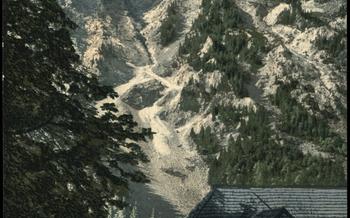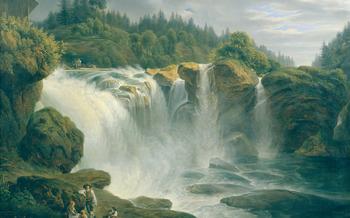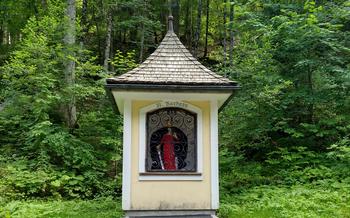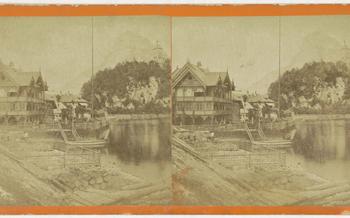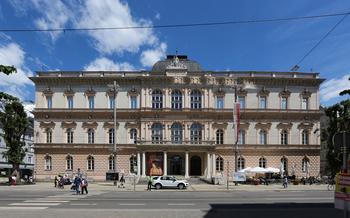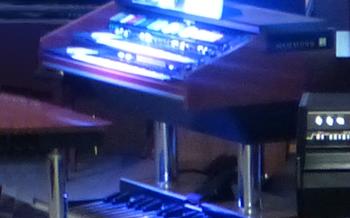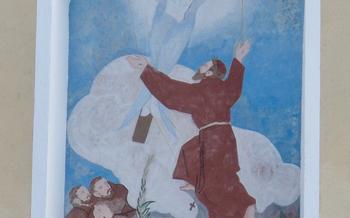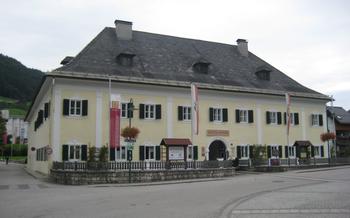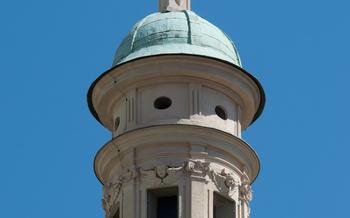
Urweltmuseum (Museum of Prehistoric Times)
- Gmunden’s Urweltmuseum: A Journey Through Time
- Exploring the Museum's Exhibits
- Journey to the Permian Period
- The Triassic Period: A New Beginning
- The Jurassic Period: Age of the Dinosaurs
- Jurassic Landscape and Climate
- Dinosaur Fossils and Diversity
- Famous Jurassic Dinosaurs
- Jurassic Exhibits at the Museum
- The Cretaceous Period: The Final Chapter
- Witnessing the Evolution of Life
- Interactive Learning Experiences
- Paleontology for Kids: Engaging Young Minds
- The Museum's Research and Conservation Efforts
- Temporary Exhibitions and Special Events
- Beyond the Museum: Exploring Gmunden
- Practical Tips for Visitors
- Photography and Social Media
Gmunden’s Urweltmuseum: A Journey Through Time
Nestled in the picturesque town of Gmunden, Austria, the Urweltmuseum (Museum of Prehistoric Times) invites visitors on an extraordinary journey through Earth's ancient history. Established in 1991, the museum houses an impressive collection of fossils, replicas, and interactive exhibits that bring the prehistoric world to life. Located at the heart of Gmunden, the Urweltmuseum is easily accessible by foot, public transportation, or car, offering ample parking spaces for visitors' convenience. The museum's hours of operation vary seasonally, but generally, it opens from Tuesday to Sunday. Admission fees are nominal, with discounts for families and groups. Guided tours are available in English and German, providing in-depth insights into the museum's exhibits and the fascinating world of prehistoric life. The Urweltmuseum also offers various educational programs and workshops throughout the year, making it an ideal destination for families, school groups, and anyone interested in exploring the Earth's rich prehistoric heritage.
Exploring the Museum's Exhibits
The Urweltmuseum Gmunden takes you on a journey through prehistoric times with its remarkable collection of fossils, skeletons, life-size dioramas, and interactive displays. Immerse yourself in the fascinating world of ancient life as you wander through the museum's exhibits.
Fossils and Skeletons:
Get up close and personal with a diverse range of fossils, from tiny prehistoric insects to massive dinosaur bones. Examine the intricate details of these ancient remains and marvel at the diversity of life that once thrived on Earth.
Life-size Dioramas:
Step into realistic and immersive life-size dioramas that recreate prehistoric habitats. Witness dinosaurs roaming the Earth, giant sea creatures swimming in ancient oceans, and early hominids exploring their surroundings.
Interactive Displays:
Engage with interactive displays that bring the past to life. Manipulate 3D models of fossils, watch multimedia presentations, and even experience the thrill of a simulated dinosaur encounter. These interactive exhibits make learning about prehistoric times fun and engaging for visitors of all ages.
Educational Programs:
The Urweltmuseum offers a range of educational programs designed to deepen your understanding of prehistoric life. Attend guided tours led by experienced paleontologists, participate in workshops and lectures, or enroll in courses to delve deeper into the captivating world of paleontology.
Journey to the Permian Period
The Urweltmuseum Gmunden takes visitors on an immersive journey to the Permian Period, an ancient era that marked a crucial transition in Earth's history. This period, which spanned from 299 to 251 million years ago, was characterized by significant geological and biological changes.
The Permian exhibits at the museum provide a glimpse into the diverse and fascinating life that existed during this time. Visitors can marvel at the fossils of ancient creatures, such as the giant amphibian Archegosaurus, which could grow up to 6 meters in length, and the Dimetrodon, a sail-backed synapsid that roamed the Earth alongside early reptiles.
One of the highlights of the Permian section is the display dedicated to the Great Dying, a catastrophic event that occurred towards the end of the period and resulted in the extinction of over 90% of marine and terrestrial species. Visitors can learn about the various theories surrounding this global extinction event and its profound impact on the evolution of life.
Exploring the Permian Period at the Urweltmuseum Gmunden offers a unique opportunity to understand the Earth's ancient history and witness the incredible diversity of life that existed millions of years ago.
The Triassic Period: A New Beginning
The Triassic Period, spanning from 252 to 201 million years ago, marked a new era in Earth's history, following the devastating Permian-Triassic extinction event. This period witnessed the rise of new life forms and the dawn of the dinosaurs.
The Triassic landscape was characterized by vast deserts, as the supercontinent Pangea began to break apart. The climate was generally warm and dry, with seasonal variations. This period saw the diversification of plant life, including the emergence of conifers and cycads.
The Triassic Period was a time of great change in the animal kingdom. The dominant marine reptiles of the Permian, such as the therapsids, declined, giving rise to new groups of marine life, including the first true dinosaurs. These early dinosaurs, such as the Eoraptor and Herrerasaurus, were small, bipedal predators that resembled modern-day ostriches.
The Urweltmuseum showcases a remarkable collection of Triassic fossils, providing insights into this transformative period. Visitors can marvel at the skeletons of these early dinosaurs, as well as fossils of other Triassic creatures, such as the Lystrosaurus, a mammal-like reptile, and the Placodus, a fish with crushing teeth.
The museum's exhibits also highlight the rise of the dinosaurs during the Triassic Period. Visitors can learn about the evolutionary adaptations that allowed these creatures to thrive in the changing environment, including the development of bipedalism, feathers, and specialized teeth.
The Jurassic Period: Age of the Dinosaurs
The Jurassic Period, spanning from 201 to 145 million years ago, marks a crucial chapter in Earth's history, often referred to as the "Age of Dinosaurs." During this era, dinosaurs reigned supreme, evolving into a diverse array of species that dominated terrestrial ecosystems.
Jurassic Landscape and Climate
The Jurassic world was characterized by a warm and humid climate, with vast forests and lush vegetation covering the landmasses. The supercontinent Pangea had begun to break apart, forming the early stages of the continents we know today. This period witnessed the rise of towering mountain ranges and the formation of new ocean basins.
Dinosaur Fossils and Diversity
The Jurassic Period left behind an abundance of dinosaur fossils, providing valuable insights into the diversity and evolution of these magnificent creatures. From the massive herbivores like Brachiosaurus and Stegosaurus to the fearsome predators such as Allosaurus and Velociraptor, the Jurassic world was teeming with a variety of dinosaurs.
Famous Jurassic Dinosaurs
Among the most iconic Jurassic dinosaurs, Tyrannosaurus rex stands out as the most recognized and formidable predator. With its powerful jaws and massive size, T. rex was the apex predator of its time. Other notable Jurassic dinosaurs include the armored Ankylosaurus, the long-necked Diplodocus, and the agile Compsognathus.
Jurassic Exhibits at the Museum
The Urweltmuseum Gmunden dedicates significant space to showcasing the wonders of the Jurassic Period. Visitors can marvel at life-size replicas of these prehistoric giants, arranged in realistic dioramas that recreate their natural habitats. Interactive displays provide in-depth information about the behavior, diet, and evolution of Jurassic dinosaurs.
The Cretaceous Period: The Final Chapter
The Cretaceous Period marked the final chapter of the Mesozoic Era, spanning from approximately 145 to 66 million years ago. It was a time of significant environmental changes, with the rise and fall of sea levels shaping the Earth's landscapes. The climate was warm and humid, providing ideal conditions for the proliferation of life.
During the Cretaceous Period, dinosaurs continued to dominate the land, reaching their peak in terms of size and diversity. Iconic species like the Tyrannosaurus rex and the Triceratops roamed the Earth, along with a variety of other herbivores and carnivores. The seas were teeming with marine reptiles, including the massive Mosasaurus and the long-necked Plesiosaurus.
However, the Cretaceous Period also witnessed the rise of mammals, which would eventually replace dinosaurs as the dominant land animals. Small, shrew-like mammals scurried in the shadows of the giant dinosaurs, adapting to fill niches that the dinosaurs did not occupy.
The end of the Cretaceous Period was marked by a catastrophic event known as the K-T extinction event, which wiped out nearly three-quarters of all plant and animal species, including the dinosaurs. The exact cause of this extinction is still debated, with theories ranging from a massive asteroid impact to increased volcanic activity.
At the Urweltmuseum, visitors can explore the Cretaceous Period through a variety of exhibits, including fossil remains of dinosaurs, marine reptiles, and mammals. Interactive displays provide insights into the behavior and habitats of these ancient creatures, shedding light on the final chapter of the Age of Dinosaurs.
Witnessing the Evolution of Life
The Urweltmuseum takes you on a journey through the grand narrative of evolution, revealing the intricate connections between life forms across millions of years. Through its collection of fossils and interactive displays, the museum showcases the remarkable diversity of life that has inhabited our planet.
The fossil record provides irrefutable evidence of the evolution of life, from simple, single-celled organisms to the complex and diverse species we see today. Visitors can trace this evolutionary journey through the museum's exhibits, which highlight the major transitions and milestones in the history of life.
The museum's displays showcase the Tree of Life, a visual representation of the evolutionary relationships between different species. This interactive exhibit allows visitors to explore the interconnectedness of all living things and understand their place within the grand tapestry of life.
Educational programs and guided tours delve deeper into the concepts of evolution, providing insights into the mechanisms that drive the diversity and adaptation of life forms. These programs emphasize the importance of preserving biodiversity and understanding the complex interactions between species and their environment.
Interactive Learning Experiences
The Urweltmuseum offers an array of engaging and interactive learning experiences that bring the prehistoric world to life for visitors of all ages. Step into the Discovery Zone, a dedicated area where you can touch and examine real fossils, uncovering the secrets of ancient life. Dive into the virtual reality realm with immersive displays that transport you back in time, allowing you to witness prehistoric creatures in their natural habitats. Participate in educational workshops and hands-on activities that foster a deeper understanding of paleontology and the marvels of prehistoric life.
Paleontology for Kids: Engaging Young Minds
The Urweltmuseum offers an array of interactive and engaging activities designed to spark the curiosity of young learners and budding paleontologists. Children can embark on fossil hunts and scavenger hunts, exploring the museum's exhibits to uncover hidden treasures and learn about the ancient creatures that once roamed the Earth.
Dedicated learning zones provide hands-on activities and interactive displays, allowing kids to touch and examine fossils, solve puzzles, and engage in educational games. The museum also hosts workshops and classes specifically tailored for children, where they can learn about paleontology, conduct experiments, and create their own fossil replicas.
These interactive experiences not only entertain but also educate, fostering a love for science and natural history in young minds. The Urweltmuseum's commitment to interactive learning ensures that children have a fun and educational experience, inspiring them to explore the wonders of prehistoric life.
The Museum's Research and Conservation Efforts
The Urweltmuseum Gmunden is not only a place of exhibition and education but also an active center of paleontological research and fossil conservation. The museum's dedicated team of paleontologists, conservators, and researchers is committed to advancing the field of paleontology through ongoing studies, fossil restoration projects, and collaborations with universities and research institutions.
- Ongoing Paleontological Research:
Scientists at the Urweltmuseum conduct extensive research on the fossils and geological formations of the region, contributing to our understanding of prehistoric life and environmental changes. They participate in field expeditions, analyze fossil specimens, and publish their findings in scientific journals.
- Fossil Conservation and Restoration:
The museum's conservation laboratory plays a vital role in preserving and restoring fossils from the Gmunden region. Conservators use specialized techniques to clean, stabilize, and repair delicate fossil specimens, ensuring their long-term preservation for future generations.
- Collaborations with Universities:
The Urweltmuseum collaborates with universities and research institutions worldwide, providing access to its fossil collection and expertise for academic research. These collaborations foster knowledge exchange, promote paleontological education, and contribute to the advancement of the field.
- Research Publications:
The museum's research team regularly publishes scientific papers, contributing to the body of knowledge in paleontology. These publications showcase new discoveries, provide insights into prehistoric life, and enhance our understanding of the Earth's history.
Temporary Exhibitions and Special Events
The Urweltmuseum Gmunden takes pride in its dynamic and engaging approach to paleontology and natural history. In addition to its permanent exhibits, the museum regularly hosts temporary exhibitions and special events to showcase new discoveries, delve into specific topics, and provide a platform for paleontological discourse.
These temporary exhibitions often focus on specific geological periods, fossil discoveries, or paleontological research projects. They feature unique specimens, interactive displays, and multimedia presentations that allow visitors to explore different aspects of prehistoric life in greater depth.
The museum also organizes themed workshops, lectures, and educational programs throughout the year. These events are designed to engage visitors of all ages with paleontology and natural history. Experts from the museum and guest speakers share their knowledge and insights on various topics, from fossil identification to paleoclimatology.
Fossil exhibitions for schools are a popular feature of the museum's outreach program. School groups can book guided tours and workshops tailored to their curriculum, providing an immersive and hands-on learning experience for students.
Furthermore, the museum hosts regular events and festivals that celebrate paleontology and natural history. These events include fossil fairs, outdoor exhibitions, and family-friendly activities that bring the wonders of the prehistoric world to a wider audience.
Beyond the Museum: Exploring Gmunden
Gmunden's Urweltmuseum offers an immersive journey into prehistoric times, but the town of Gmunden itself has much more to offer. Visitors can explore the historic Old Town, with its charming streets, colorful buildings, and historic landmarks. The Old Town is also home to numerous shops, cafes, and restaurants, providing a vibrant atmosphere and a taste of local cuisine.
Lake Traunsee, located just steps away from the museum, is a stunning natural attraction that invites visitors to enjoy outdoor activities and water sports. Take a leisurely stroll along the lakeside promenade, go for a swim in the crystal-clear waters, or embark on a boat trip to explore the surrounding landscapes.
Gmunden's natural beauty extends beyond the lake, with hiking trails and mountain biking routes leading into the surrounding hills and forests. Visitors can explore the lush landscapes, panoramic views, and hidden natural gems that make Gmunden a paradise for outdoor enthusiasts.
For those seeking cultural experiences, Gmunden offers a variety of attractions. The Gmunden Museum provides insights into the town's history, culture, and traditions. The Rathausplatz, the main square of Gmunden, hosts regular events, concerts, and festivals, creating a lively atmosphere and showcasing local talent.
Gmunden is also a great base for exploring the surrounding region. Day trips to nearby towns and attractions, such as the Traunsee Schifffahrt, the Schloss Ort, and the Salzkammergut Mountains, offer a chance to discover more of the region's natural and cultural heritage.
Practical Tips for Visitors
Planning a trip to the Urweltmuseum Gmunden? Here are some practical tips to make your visit as enjoyable and informative as possible:
-
Plan Your Visit: Check the museum's official website for hours of operation, admission fees, and any upcoming special events or exhibitions. Plan your visit accordingly to avoid crowds and make the most of your time.
-
Travel Tips and Transportation: Gmunden is easily accessible by car, train, or bus. For those driving, parking is available near the museum. If using public transportation, check train and bus schedules to ensure a smooth journey.
-
On-site Facilities and Services: The museum offers various amenities for visitors, including a gift shop where you can purchase souvenirs, books, and educational materials. There's also a café where you can grab a bite to eat or a refreshing drink.
-
Accessibility and Parking Information: The museum is wheelchair accessible, with ramps and elevators providing easy access to all exhibits. Ample parking is available nearby, including designated spaces for visitors with disabilities.
Photography and Social Media
The Urweltmuseum offers ample opportunities for capturing stunning photographs that showcase the wonders of prehistoric life. Visitors are encouraged to take photos and share their experiences on social media, using the designated hashtags and geotagging the museum's location. The museum's Instagram and Facebook pages often feature captivating images and stories shared by visitors, creating a vibrant online community of paleontology enthusiasts.
To ensure a respectful and enjoyable experience for all, visitors are kindly requested to adhere to the museum's photography guidelines. Using flash photography is prohibited, as it can damage the delicate fossils and exhibits. Tripods and selfie sticks are also not permitted, as they may obstruct other visitors' views.
The Urweltmuseum actively engages with its social media followers, sharing captivating content, hosting online discussions, and organizing interactive contests. Visitors are encouraged to follow the museum's social media channels to stay updated on upcoming events, special exhibitions, and educational programs. By sharing their experiences and insights, visitors contribute to the museum's mission of promoting paleontological knowledge and inspiring future generations of scientists and nature enthusiasts.
